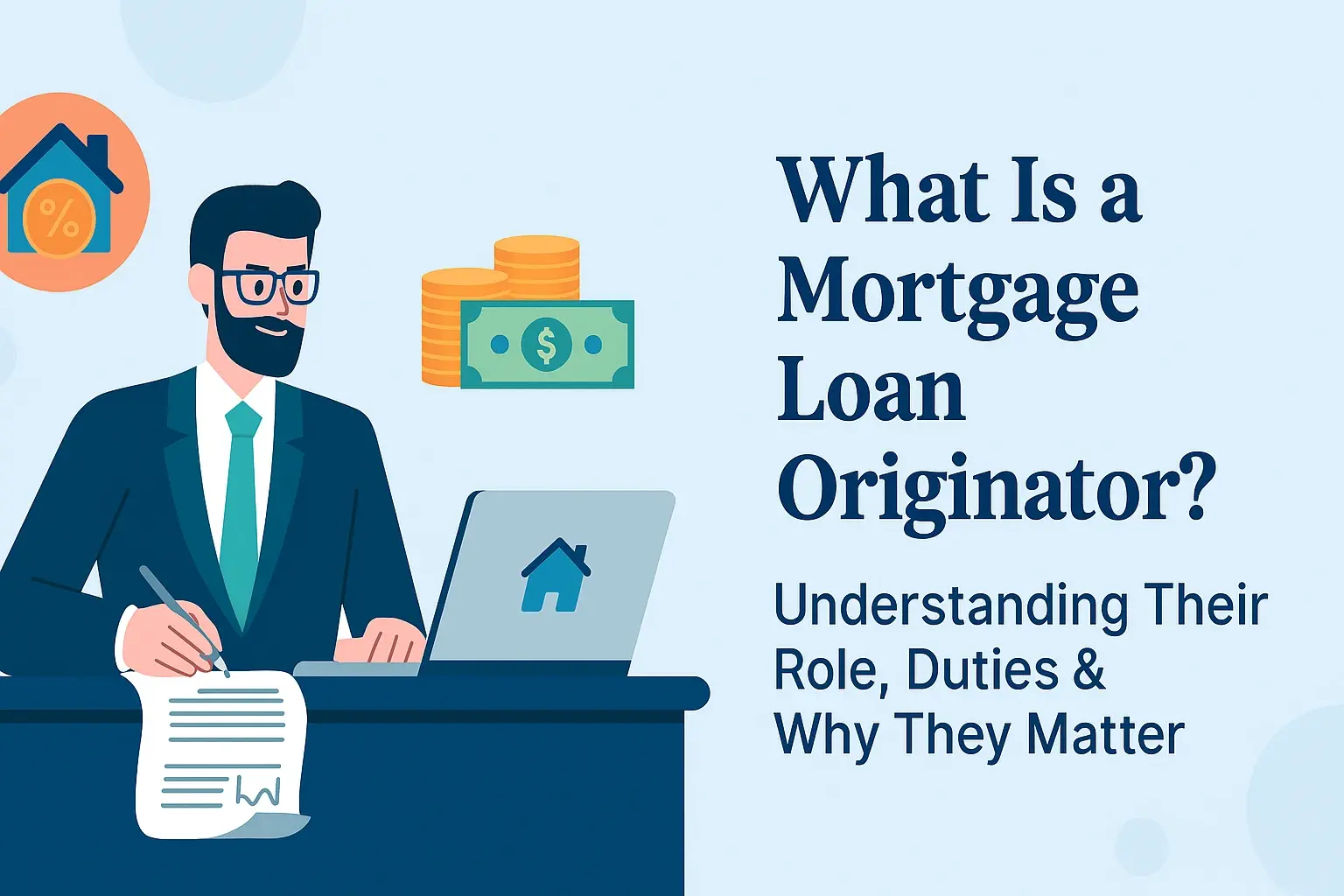-
Posted on: 30 Jan 2025

-
What is a 631 Credit Score?
A 631 credit score falls into the "fair" category, meaning it's neither exceptionally good nor critically bad. This score can present challenges when seeking new credit, but it's also a solid foundation for improvement. Understanding its nuances is key to unlocking better financial opportunities.
Understanding Credit Score Ranges
Credit scores are numerical representations of your creditworthiness, helping lenders assess the risk of lending you money. While different scoring models exist (like FICO and VantageScore), they generally categorize scores into broad ranges. Understanding these ranges provides context for your 631 score.
FICO Score Ranges (as of 2025)
The FICO score is the most widely used credit scoring model. Its ranges are typically:
- Exceptional: 800-850
- Very Good: 740-799
- Good: 670-739
- Fair: 580-669
- Poor: 300-579
VantageScore Ranges (as of 2025)
VantageScore, a newer model, has slightly different ranges:
- Excellent: 781-850
- Good: 661-780
- Fair: 601-660
- Poor: 500-600
- Very Poor: 300-499
Based on these common models, a 631 credit score typically lands squarely in the "Fair" category. This means you're likely to encounter higher interest rates and stricter lending criteria compared to individuals with "Good" or "Very Good" scores.
Is 631 a Good Credit Score? Pros and Cons
The question "Is 631 a good credit score?" doesn't have a simple yes or no answer. It's a score that sits on the cusp, offering some advantages while presenting significant hurdles. Let's break down the pros and cons to give you a clearer picture.
Pros of a 631 Credit Score
While not ideal, a 631 credit score isn't the worst possible outcome. There are still some positive aspects:
- Above the "Poor" Threshold: You are above the lowest credit score tier, meaning you haven't reached a point where lending is almost impossible. This offers a foundation to build upon.
- Potential for Improvement: A fair score indicates that past credit behavior may have been less than perfect, but it also suggests that positive changes can have a noticeable impact. Lenders see potential for growth.
- Access to Some Credit Products: While not the prime offers, you can still qualify for certain credit cards, auto loans, and even some personal loans, albeit with less favorable terms. Secured credit cards or credit-builder loans are often accessible.
- Opportunity to Learn and Grow: Having a fair score can be a powerful motivator to understand credit management better and implement strategies that will serve you well for years to come. It's a learning curve that leads to financial maturity.
- Less Severe Consequences Than Poor Scores: Compared to scores in the 300-500 range, a 631 score generally means less extreme consequences for things like higher insurance premiums or difficulty securing housing.
Cons of a 631 Credit Score
The disadvantages of a 631 credit score are more pronounced and can significantly impact your financial life:
- Higher Interest Rates: This is the most significant drawback. Lenders view a 631 score as higher risk, so they compensate by charging you more interest on loans and credit cards. This can cost you thousands of dollars over the life of a loan.
- Limited Loan Approval Chances: Many prime lenders will deny applications outright for mortgages, auto loans, and personal loans with a score in the fair range. You'll likely be limited to subprime lenders or those specializing in lower credit scores, which often come with even worse terms.
- Lower Credit Limits: For credit cards, expect significantly lower credit limits than someone with a good or excellent score. This can make it harder to manage your spending or make larger purchases.
- Higher Down Payments: When applying for loans, particularly mortgages and auto loans, you may be required to make a larger down payment to offset the lender's perceived risk.
- Difficulty Renting Apartments: Landlords often check credit scores as part of the tenant screening process. A 631 score might lead to rejection or require a co-signer or larger security deposit.
- Higher Insurance Premiums: In many states, insurance companies use credit-based insurance scores to help determine premiums for auto and homeowners insurance. A fair credit score can lead to higher insurance costs.
- Fewer Credit Card Rewards and Perks: You'll likely be excluded from premium rewards cards offering generous cashback, travel points, or sign-up bonuses.
- Potential for Predatory Lending: Desperate for credit, individuals with fair scores might fall prey to predatory lenders offering loans with exorbitant fees and interest rates.
In essence, a 631 credit score means you're on the edge. You can still access credit, but it will be more expensive and harder to obtain. The primary goal should be to improve this score to unlock better financial products and save money.
How to Improve a 631 Credit Score
Improving a 631 credit score is achievable with consistent effort and smart financial habits. The key is to address the factors that influence your score and demonstrate to lenders that you are a reliable borrower. Here's a step-by-step approach.
Strategies for Boosting Your Credit
Improving your credit score involves a multi-faceted approach focusing on the core components of credit scoring models.
1. Understand Your Credit Report
Before you can improve your score, you need to know what's influencing it. Obtain copies of your credit reports from the three major credit bureaus: Equifax, Experian, and TransUnion. You are entitled to one free report from each bureau annually via AnnualCreditReport.com.
Actionable Step: Review each report carefully for errors. Inaccurate information (e.g., incorrect late payments, accounts that aren't yours) can significantly drag down your score. Dispute any errors immediately with the respective credit bureau.
2. Prioritize On-Time Payments
Payment history is the single most crucial factor in your credit score, accounting for about 35% of your FICO score. Even a single missed payment can have a detrimental effect.
Actionable Step: Set up automatic payments for all your bills (credit cards, loans, utilities if reported) to ensure you never miss a due date. If you've missed payments in the past, focus intensely on making every payment on time going forward. For past due accounts, contact the lender to arrange a payment plan.
3. Reduce Your Credit Utilization Ratio (CUR)
Your CUR is the amount of credit you're using compared to your total available credit. It accounts for about 30% of your FICO score. A high CUR signals to lenders that you might be overextended.
Actionable Step: Aim to keep your CUR below 30%, and ideally below 10%. If you have a credit card with a $1,000 limit and a balance of $500, your CUR is 50%. To improve this, you can either pay down the balance or ask for a credit limit increase (if you can manage spending responsibly).
Example: If you have a $1,000 balance on a card with a $2,000 limit (50% utilization), paying it down to $500 would bring your utilization to 25%, which is much better for your score.
4. Avoid Opening Too Many New Accounts
Opening multiple new credit accounts in a short period can negatively impact your score. Each application typically results in a "hard inquiry," which can slightly lower your score. The length of your credit history (15% of your score) also plays a role; new accounts shorten your average credit age.
Actionable Step: Only apply for credit when you truly need it. If you're looking to improve your score, focus on managing existing accounts rather than opening many new ones.
5. Keep Old Accounts Open (If Possible)
The length of your credit history contributes about 15% to your score. Older, well-managed accounts demonstrate a longer track record of responsible credit use.
Actionable Step: Unless an old account has an annual fee you can't justify or you're tempted to overspend, keep it open. Even if you don't use it often, a long-standing account with a good payment history benefits your score.
6. Consider a Credit-Builder Loan or Secured Credit Card
If you have limited credit history or need to rebuild after past issues, these tools can be very effective. A credit-builder loan involves making payments on a loan that is held in a savings account until the loan is repaid. A secured credit card requires a cash deposit that serves as your credit limit.
Actionable Step: Research reputable credit unions or banks offering these products. Use them responsibly by making all payments on time. The reporting of this positive activity to credit bureaus will help improve your score over time.
7. Diversify Your Credit Mix (Over Time)
Credit mix (10% of your score) refers to the types of credit you have (e.g., credit cards, installment loans like mortgages or auto loans). Having a mix can show you can manage different types of credit, but this factor is less critical than payment history and utilization.
Actionable Step: Don't open new accounts solely to improve your credit mix. Focus on the other factors first. If you naturally have both revolving credit (credit cards) and installment credit (a loan), that's beneficial.
Understanding Your Credit Report
Your credit report is a detailed record of your credit history. It's compiled by credit bureaus and used by lenders to make decisions. Understanding its components is crucial for score improvement.
A typical credit report includes:
- Personal Information: Name, address, Social Security number, date of birth, employment history.
- Credit Accounts: A list of all your credit cards, loans, mortgages, and other credit lines, including account numbers, opening dates, credit limits, balances, and payment history.
- Public Records: Information on bankruptcies, liens, and judgments.
- Inquiries: A record of who has accessed your credit report. "Hard inquiries" occur when you apply for credit, while "soft inquiries" occur for promotional offers or background checks and don't affect your score.
Actionable Step: Regularly check your credit reports for inaccuracies. If you find any, file a dispute with the credit bureau. This process can take time but is vital for ensuring your score accurately reflects your creditworthiness.
Payment History Matters
As mentioned, this is the most significant factor. A consistent history of paying bills on time is the bedrock of a good credit score. Late payments, defaults, and collections can severely damage your score.
Actionable Step: For a 631 score, the focus should be on establishing a flawless payment record moving forward. If you have past delinquencies, work diligently to ensure every future payment is made on or before the due date. Consider using calendar reminders or automatic payments.
Credit Utilization Ratio
This metric highlights how much of your available credit you're using. High utilization suggests you might be financially strained, making you a riskier borrower.
Actionable Step: Regularly monitor your credit card balances. Pay down balances strategically, especially on cards with high utilization. If possible, request credit limit increases on cards you use responsibly, as this can lower your utilization ratio without you spending more.
Example Table: Credit Utilization Impact**
Credit Limit Current Balance Utilization Ratio Potential Score Impact $2,000 $1,500 75% Significant Negative $2,000 $600 30% Moderate Positive $2,000 $200 10% Strong Positive Length of Credit History
Lenders prefer to see a long history of responsible credit management. The average age of your accounts, as well as the age of your oldest account, contributes to this factor.
Actionable Step: Resist the urge to close older credit accounts, especially if they are in good standing and don't have high fees. This helps maintain a longer average credit history.
Credit Mix and New Credit
Having a mix of credit types (revolving credit like credit cards and installment loans like mortgages) can be beneficial, but it's a minor factor. New credit, particularly multiple hard inquiries in a short period, can temporarily lower your score.
Actionable Step: Focus on managing your existing credit responsibly. Only apply for new credit when necessary. If you need to open a new account, consider doing so strategically, perhaps after you've improved your payment history and utilization.
What Loans Can You Get with a 631 Credit Score?
A 631 credit score places you in the "fair" credit category. This means while you might not qualify for the most competitive loan products with the lowest interest rates, you still have options. However, expect higher interest rates and potentially stricter terms compared to those with higher scores.
Mortgages with a 631 Credit Score
Securing a mortgage with a 631 credit score is challenging but not impossible, especially with certain loan programs. Traditional conventional loans often require higher scores, typically 620 minimum, but lenders often prefer 660 or higher for better rates.
Options:
- FHA Loans: The Federal Housing Administration (FHA) insures loans for borrowers with lower credit scores. With a 631 score, you might qualify for an FHA loan, often requiring a down payment of 3.5% if your score is 580 or higher. However, you'll likely pay for Mortgage Insurance Premiums (MIP) for the life of the loan.
- VA Loans: For eligible veterans and active-duty military personnel, VA loans are an excellent option. They often have no minimum credit score requirement set by the VA, but lenders will have their own overlays, often around 620-640.
- USDA Loans: These loans are for rural homebuyers and have no minimum credit score requirement, but lenders will assess creditworthiness.
- Non-QM Loans: These are "non-qualified mortgages" designed for borrowers who don't fit traditional lending criteria. They can be more flexible but often come with higher interest rates and fees.
Considerations: Expect a higher interest rate, potentially a larger down payment (even with FHA), and a thorough review of your income and debt-to-income ratio. You may also need to work with a mortgage broker specializing in borrowers with fair credit.
Auto Loans with a 631 Credit Score
Getting an auto loan with a 631 credit score is generally more feasible than a mortgage, but the interest rate will likely be higher than prime borrowers. Subprime auto loan rates can be significantly higher, impacting your monthly payments and the total cost of the vehicle.
Options:
- Dealership Financing: Many dealerships work with a variety of lenders, including those who specialize in subprime loans.
- Credit Unions: Local credit unions often offer competitive rates and may be more willing to work with members who have fair credit.
- Online Lenders: Numerous online lenders cater to borrowers with fair credit. Research and compare offers carefully.
Considerations: Be prepared for interest rates that could range from 8% to 20% or even higher, depending on the lender and your specific credit profile. A larger down payment can help secure a better rate and reduce your monthly payments.
Personal Loans with a 631 Credit Score
Personal loans are often used for debt consolidation, unexpected expenses, or home improvements. With a 631 credit score, you can still qualify for personal loans, but the terms will reflect the perceived risk.
Options:
- Online Lenders: Many online platforms specialize in personal loans for borrowers with fair credit. Examples include LendingClub, Prosper, and OneMain Financial.
- Credit Unions: Again, credit unions can be a good resource for competitive rates.
- Secured Personal Loans: If you have collateral (like a savings account or CD), a secured personal loan might be an option with better terms.
Considerations: Interest rates can be high, potentially from 10% to 30% or more. Read all loan terms carefully, paying close attention to origination fees and prepayment penalties.
Credit Cards with a 631 Credit Score
Obtaining a traditional rewards credit card can be difficult with a 631 score. However, there are still credit card options available to help you build or rebuild your credit.
Options:
- Secured Credit Cards: These are the most accessible option. You provide a cash deposit, which typically becomes your credit limit. Responsible use of a secured card can help improve your credit score. Many issuers will review your account periodically and may convert it to an unsecured card or refund your deposit.
- Credit-Builder Cards: Some issuers offer cards specifically designed for those looking to improve their credit. These often have lower limits and higher APRs but report to credit bureaus.
- Store Credit Cards: Some retail store cards may have lower approval requirements than general-purpose cards, but they often come with very high interest rates.
Considerations: Focus on cards that report to all three credit bureaus. Use the card for small, manageable purchases and pay the balance in full each month to avoid high interest charges and build positive payment history.
Alternative Lending Options
If traditional lenders are hesitant, consider these alternatives:
- Co-signer: Having a friend or family member with excellent credit co-sign a loan can significantly increase your chances of approval and may secure better terms. However, this puts your co-signer at risk if you default.
- Peer-to-Peer (P2P) Lending: Platforms connect borrowers directly with investors. While some P2P lenders have flexible criteria, interest rates can still be high.
Actionable Step: Always compare offers from multiple lenders and read the fine print before accepting any loan or credit card. Focus on improving your score to access better financial products in the future.
Common Mistakes to Avoid
When aiming to improve a 631 credit score, certain pitfalls can hinder your progress or even set you back. Being aware of these common mistakes can help you navigate the credit-building journey more effectively.
- Closing Old, Unused Credit Accounts: While it might seem logical to close accounts you don't use, this can shorten your average credit history length and reduce your total available credit, potentially increasing your credit utilization ratio. Unless there's a compelling reason like a high annual fee, keep older accounts open.
- Applying for Too Much Credit at Once: Each credit application can result in a hard inquiry on your credit report, which can temporarily lower your score. Spreading out applications over time is a better strategy.
- Missing Payments: As emphasized, payment history is paramount. Even one late payment can have a significant negative impact on a fair credit score. Set up reminders or automatic payments to avoid this.
- Maxing Out Credit Cards: High credit utilization is detrimental. Aim to keep your balances low relative to your credit limits. Paying down balances before the statement closing date can also help keep reported utilization low.
- Ignoring Credit Reports: Errors on your credit report can unfairly lower your score. Regularly check your reports from Equifax, Experian, and TransUnion for inaccuracies and dispute them promptly.
- Falling for "Credit Repair" Scams: Be wary of companies that promise to erase negative information from your credit report quickly or guarantee a specific score increase. Legitimate credit improvement takes time and consistent effort.
- Co-signing for Someone Else Without Understanding the Risk: While it can help someone else, if they default on the loan, it will negatively impact your credit score as well.
- Only Focusing on One Aspect of Your Credit: Credit scores are influenced by multiple factors. Neglecting payment history or credit utilization while focusing solely on length of credit history will limit your improvement.
- Not Having Any Credit Accounts: While having too much credit can be bad, having no credit history or very limited credit can also make it difficult to build a score. Consider a secured credit card or credit-builder loan if you have a thin credit file.
- Not Reading the Fine Print: When applying for new credit, always understand the terms, fees, and interest rates. High fees or exorbitant APRs can make it harder to manage debt and improve your financial situation.
By avoiding these common mistakes, you can create a more effective and sustainable plan for improving your credit score from 631 to a more favorable range.
Conclusion
A 631 credit score sits in the "fair" category, indicating that while you're not in dire financial straits, you're also not in a position to access the most advantageous credit products. The primary challenge with a 631 score is the higher cost of borrowing, reflected in elevated interest rates and potentially stricter lending terms across mortgages, auto loans, personal loans, and credit cards. However, this score also presents a significant opportunity for improvement. By diligently focusing on consistent on-time payments, reducing your credit utilization ratio, and monitoring your credit reports for errors, you can steadily climb into the "good" credit tier. Consider tools like secured credit cards or credit-builder loans to actively demonstrate responsible credit behavior. While a 631 score can limit your immediate options, it serves as a powerful motivator to adopt sound financial habits that will benefit you for a lifetime.










